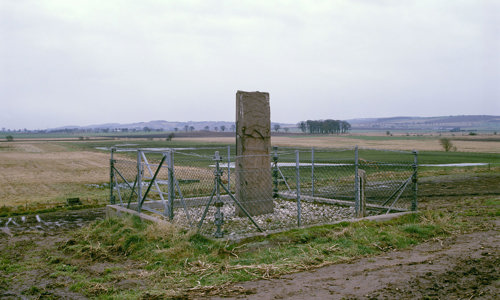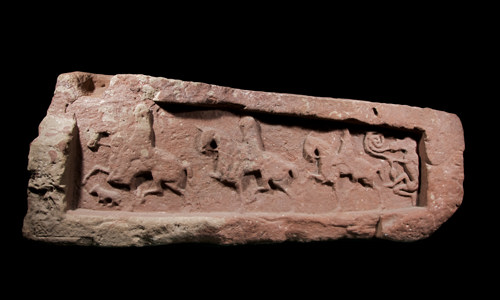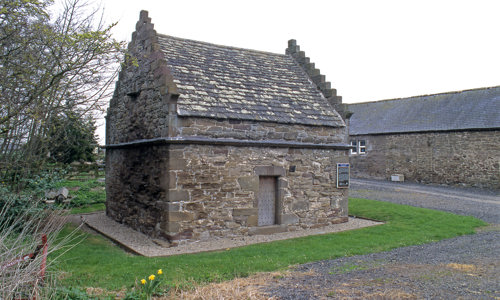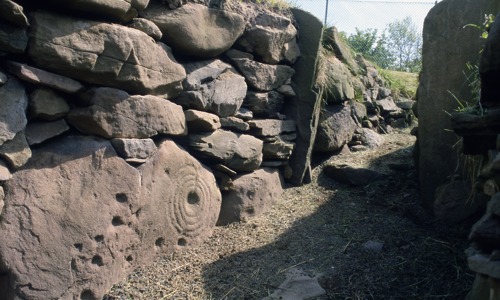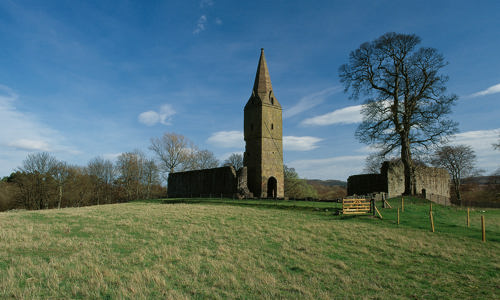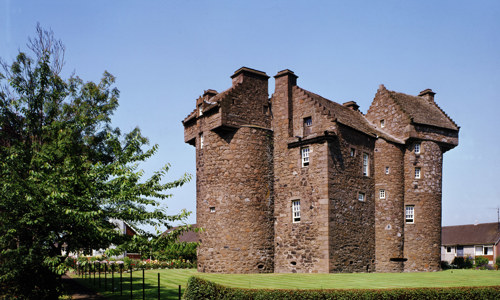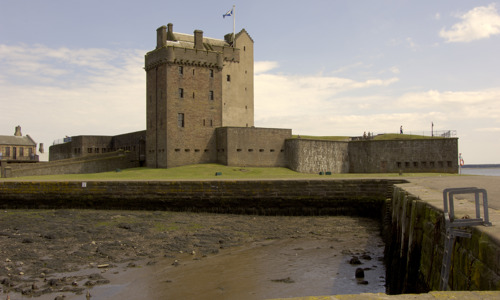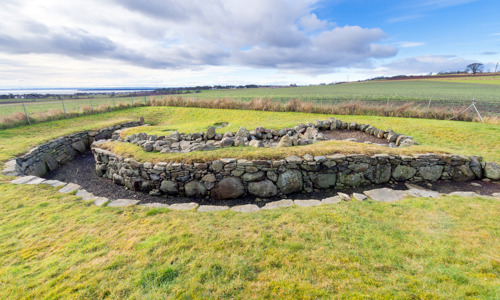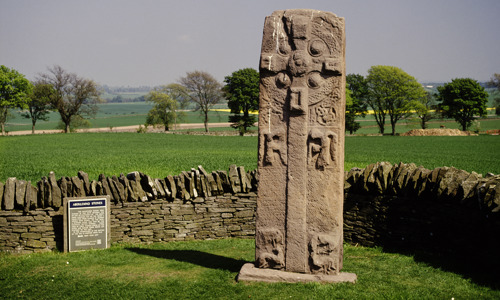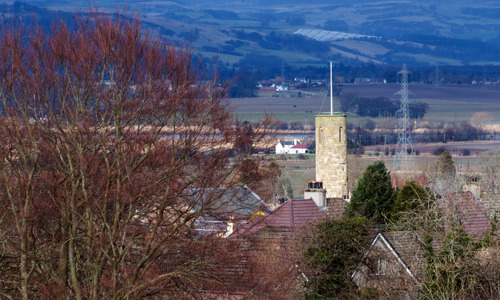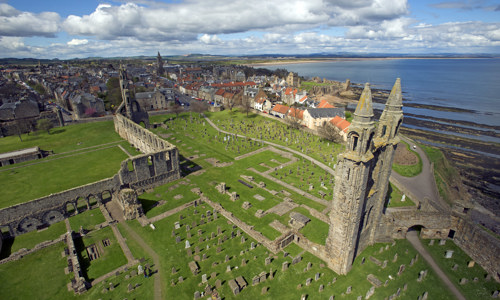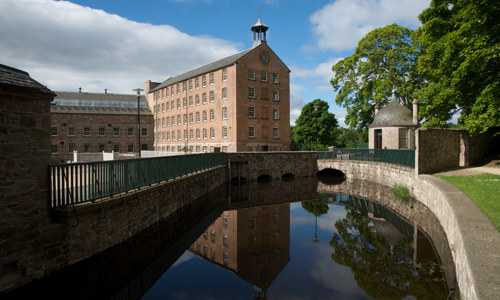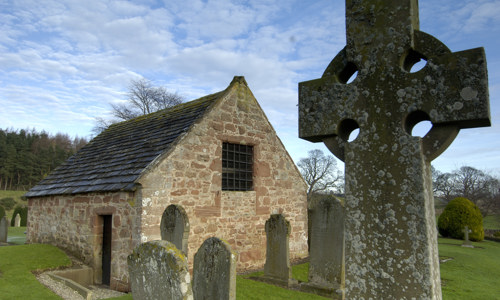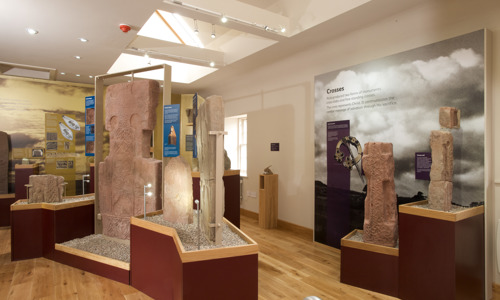History
The Eassie Cross-Slab measures about 2m tall and 1m wide, with a slightly pedimented top. Carvings on its front face depict:
- an ornate interlaced cross flanked by two figures, one being an angel
- a male hunter on foot, bearing a spear and small square shield
- a stag, a deer and hound - animals of the hunt
This hunting scene is unusual. Most hunts depicted on Pictish stones show mounted hunters. The scene also shows a Pictish capacity for realistic portrayals of animals – take a look at the stag, complete with scrolls to indicate musculature.
On the reverse are:
- two Pictish symbols
- further figures and animals
- other motifs, including a tree
This side of the cross is more difficult to interpret, and may represent a biblical scene.
Cross marks the spot
The cross-slab was found at the bed of a stream which runs below the churchyard wall. We don’t know where it was originally erected, but the existence of an early Pictish church at Eassie is possible. The slab was carved at a time when the Pictish kings were actively promoting their new church.
The slab is thought to date to the late 600s, which makes it an extremely early example of this type of monument, and one of the first overt pieces of evidence of Christianity in this part of Scotland.
The Picts’ legacy
We don’t know a lot about the Picts, the descendants of Iron-Age tribes who occupied the area north of the Forth and Clyde estuaries in the first millennium AD. They left about 200 carved stones scattered across the country.
The earliest of these stones date to about AD 600 and display a variety of enigmatic symbols. Later examples were more overtly Christian cross-slabs, and dominated by imagery of the cross. The Eassie stone is noteworthy for being an exceptionally early example of a cross-slab.


